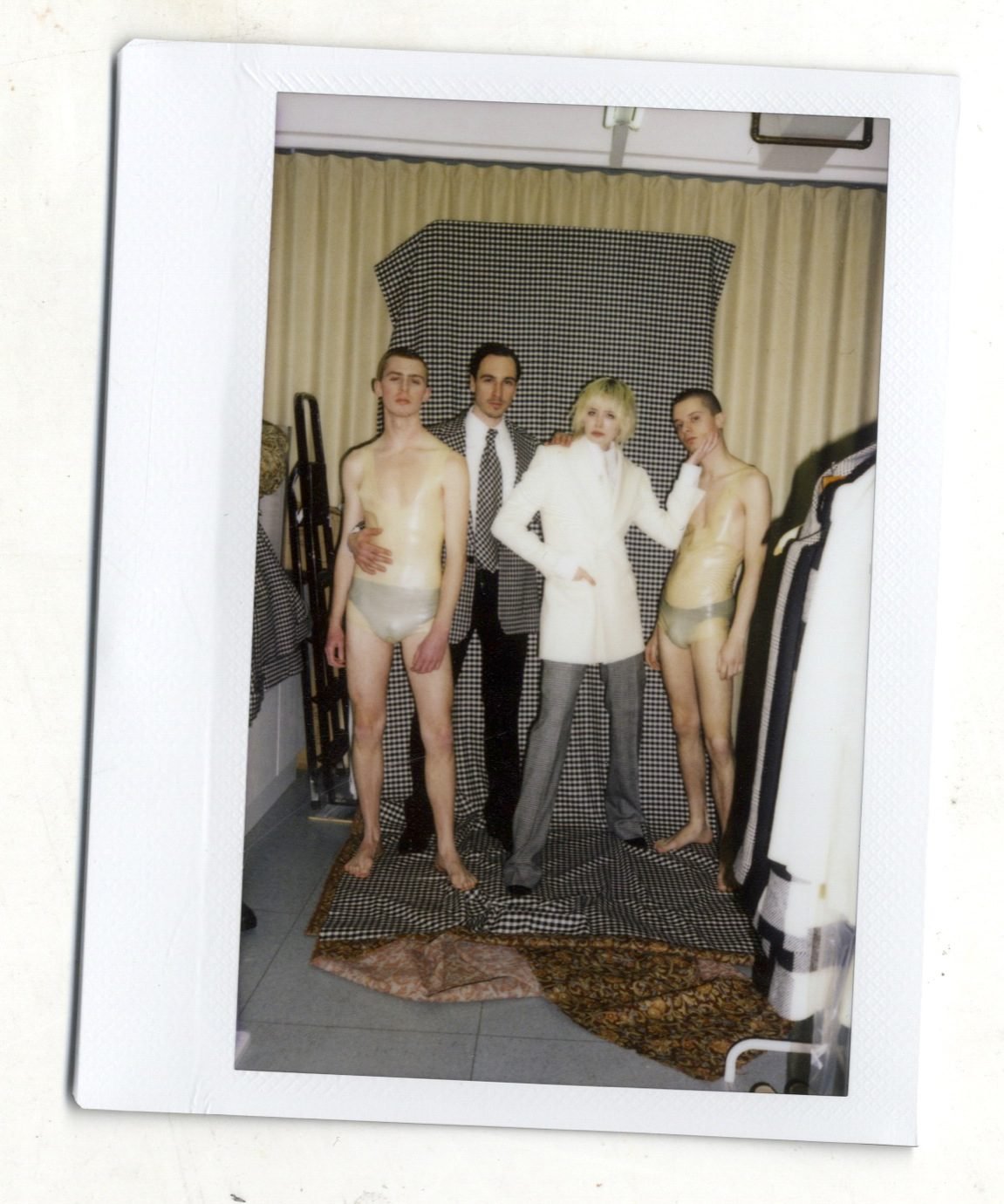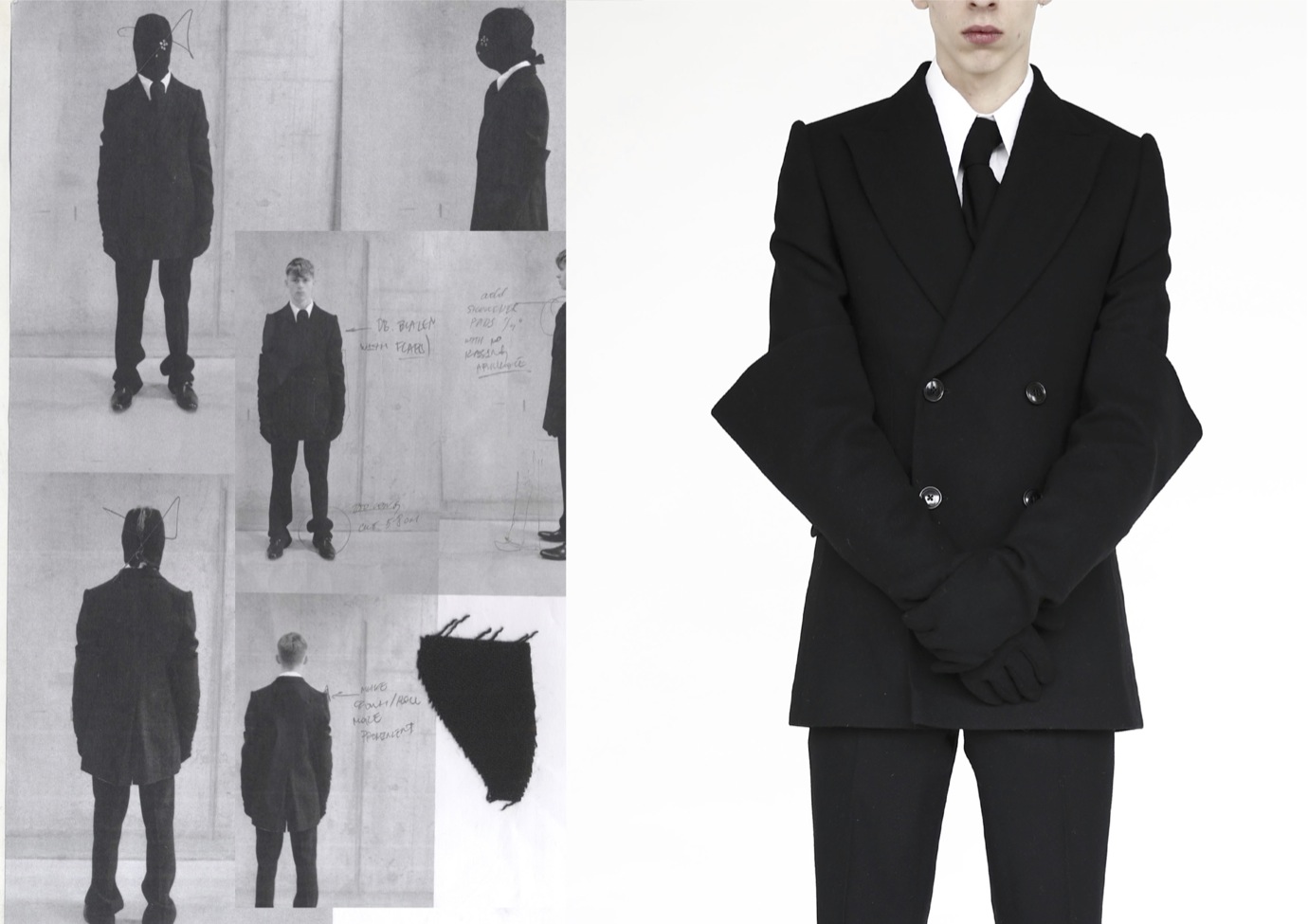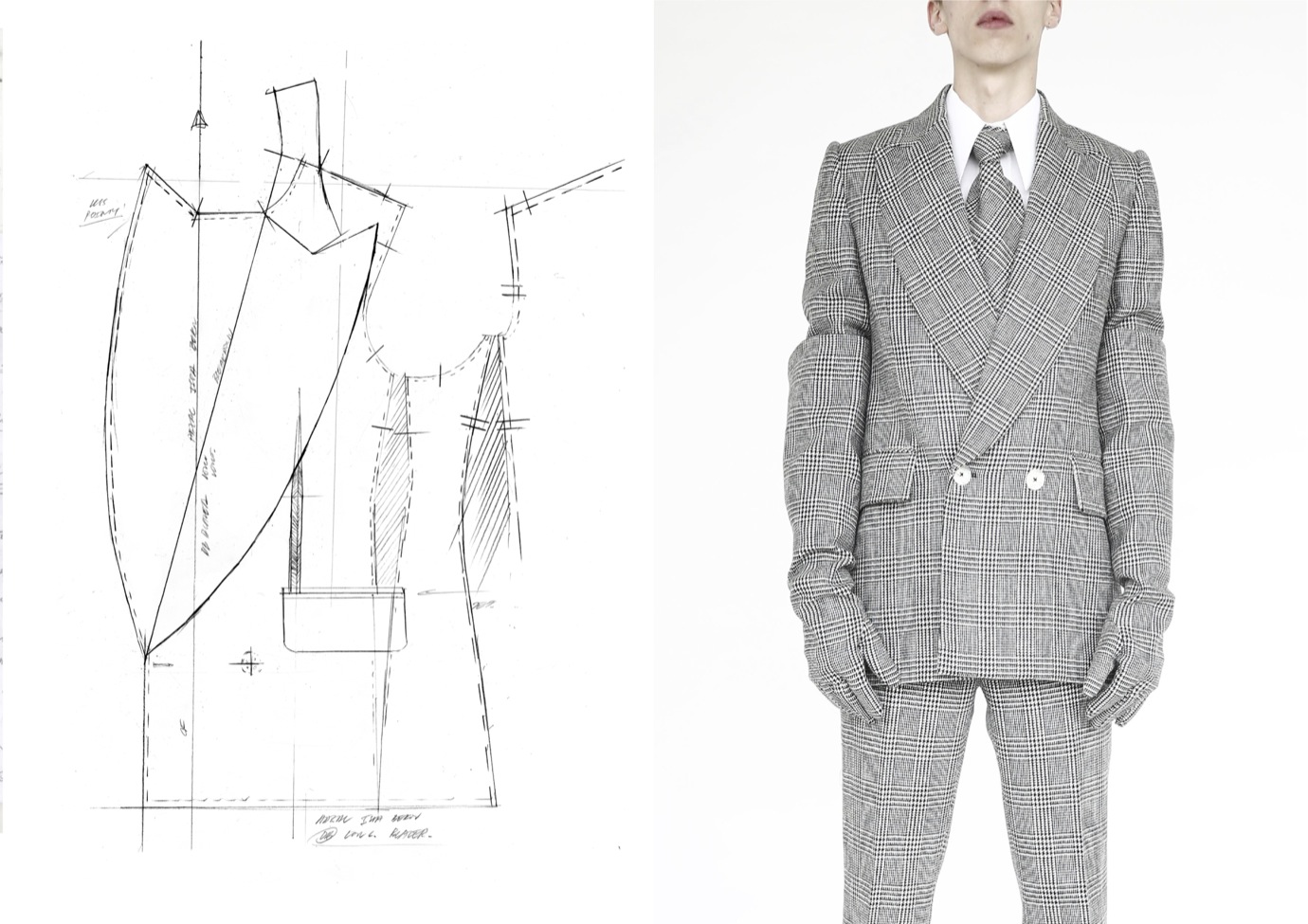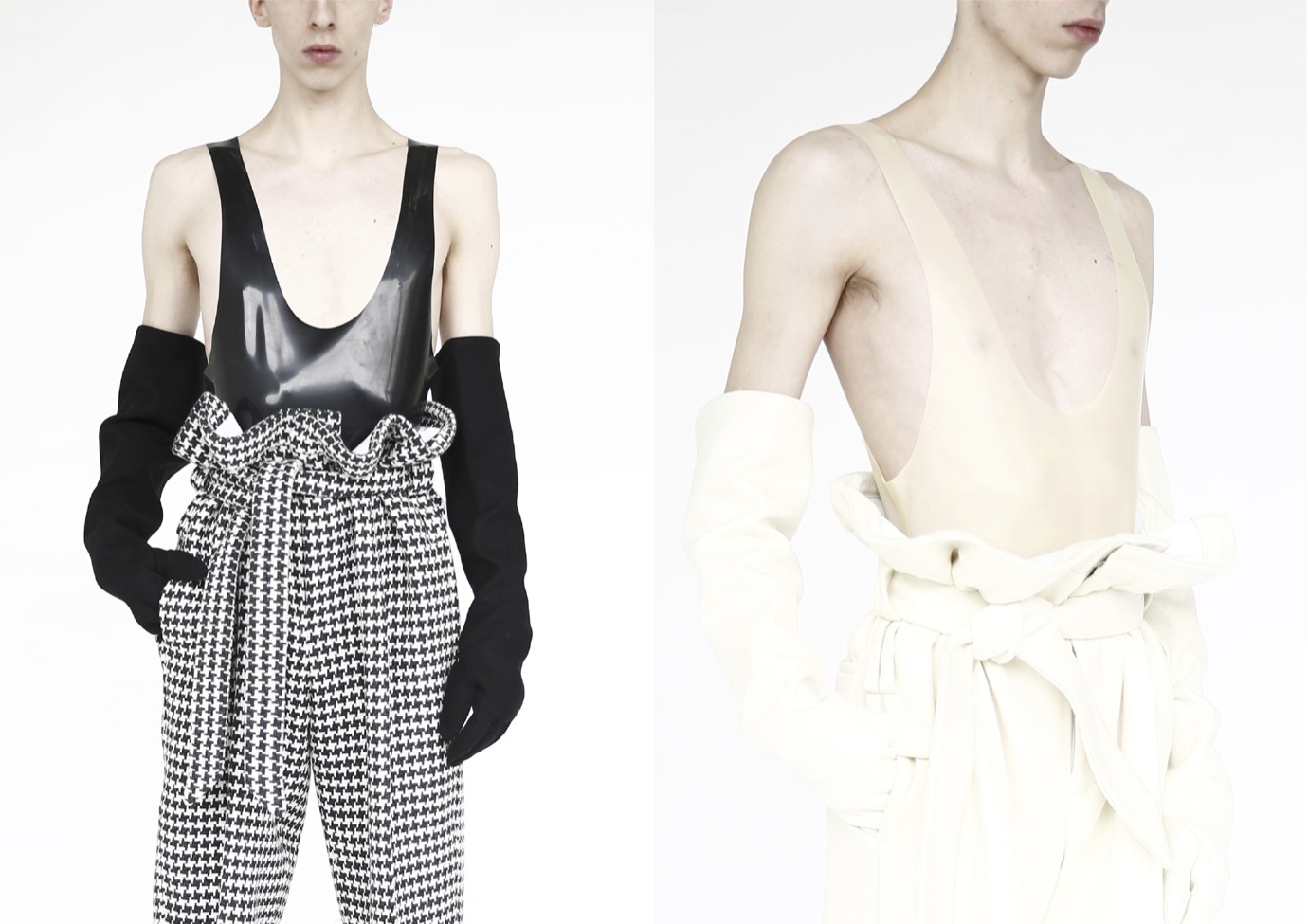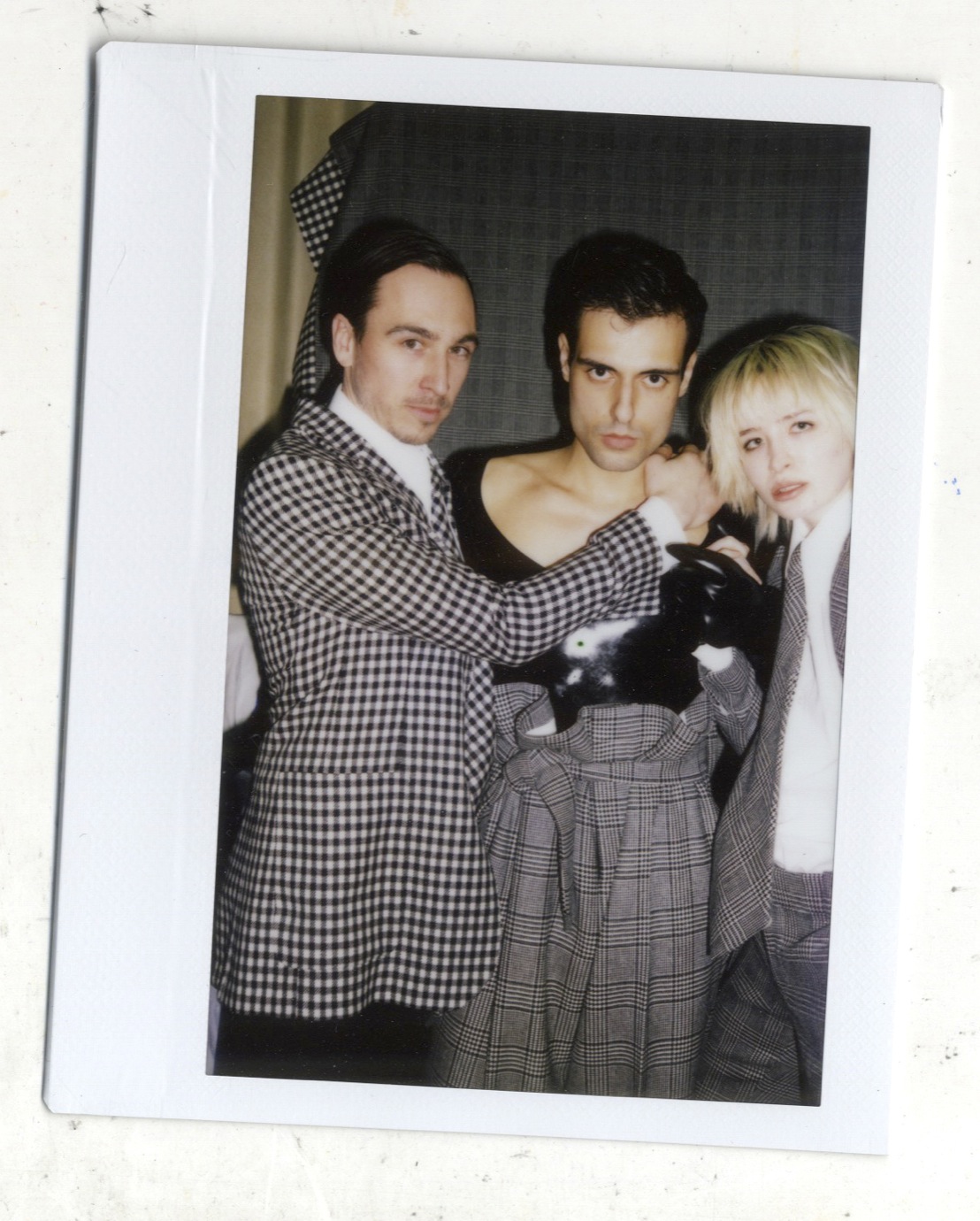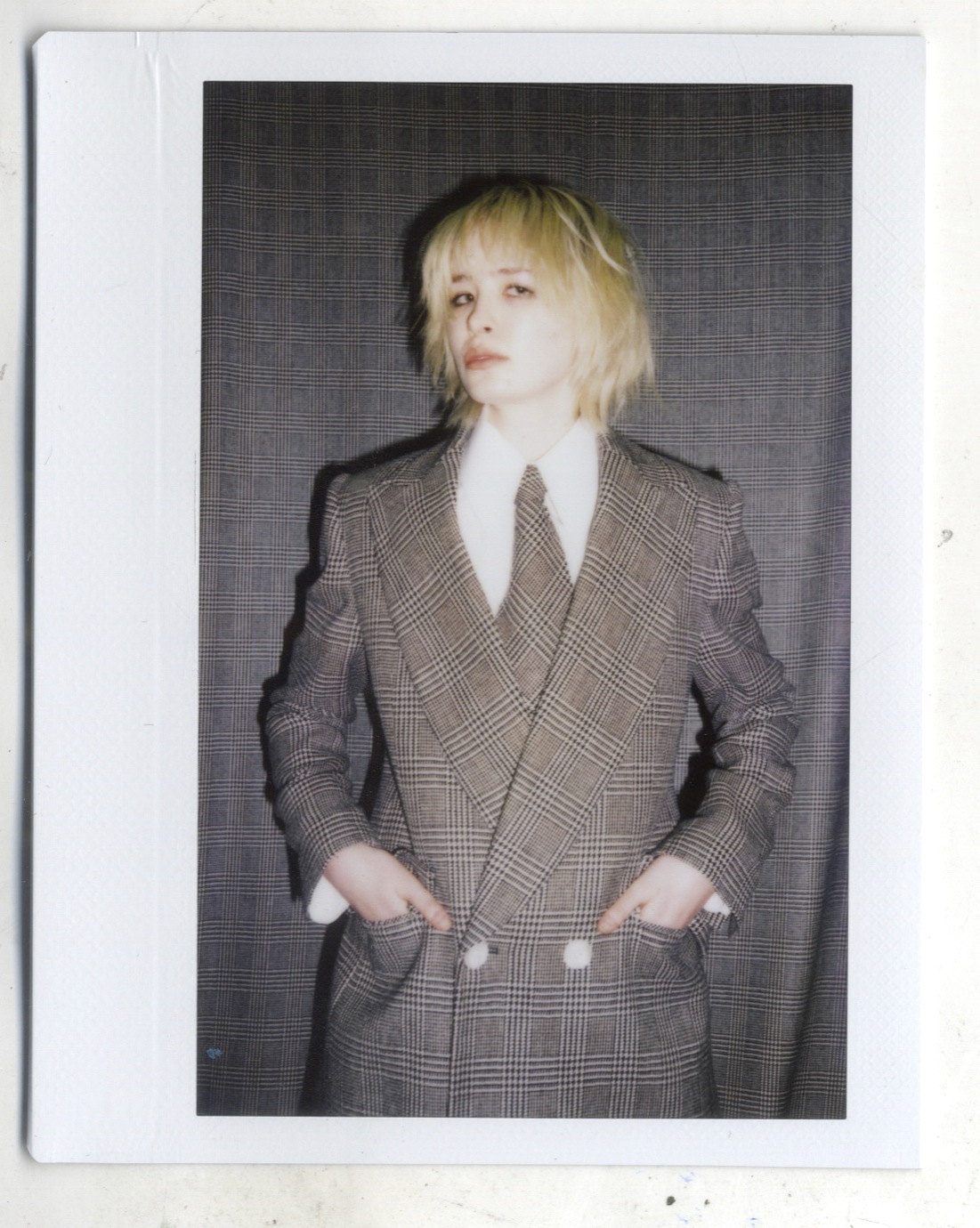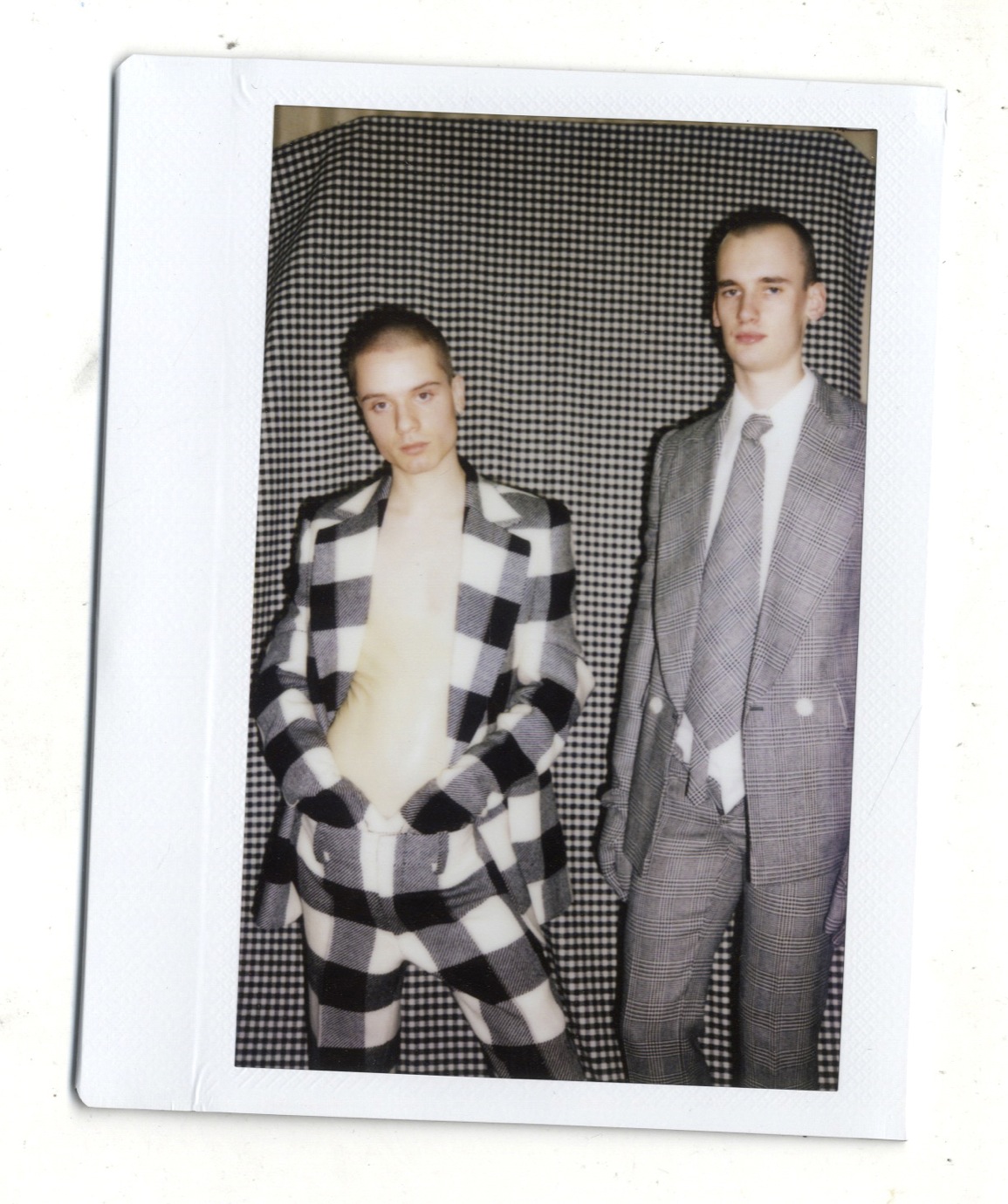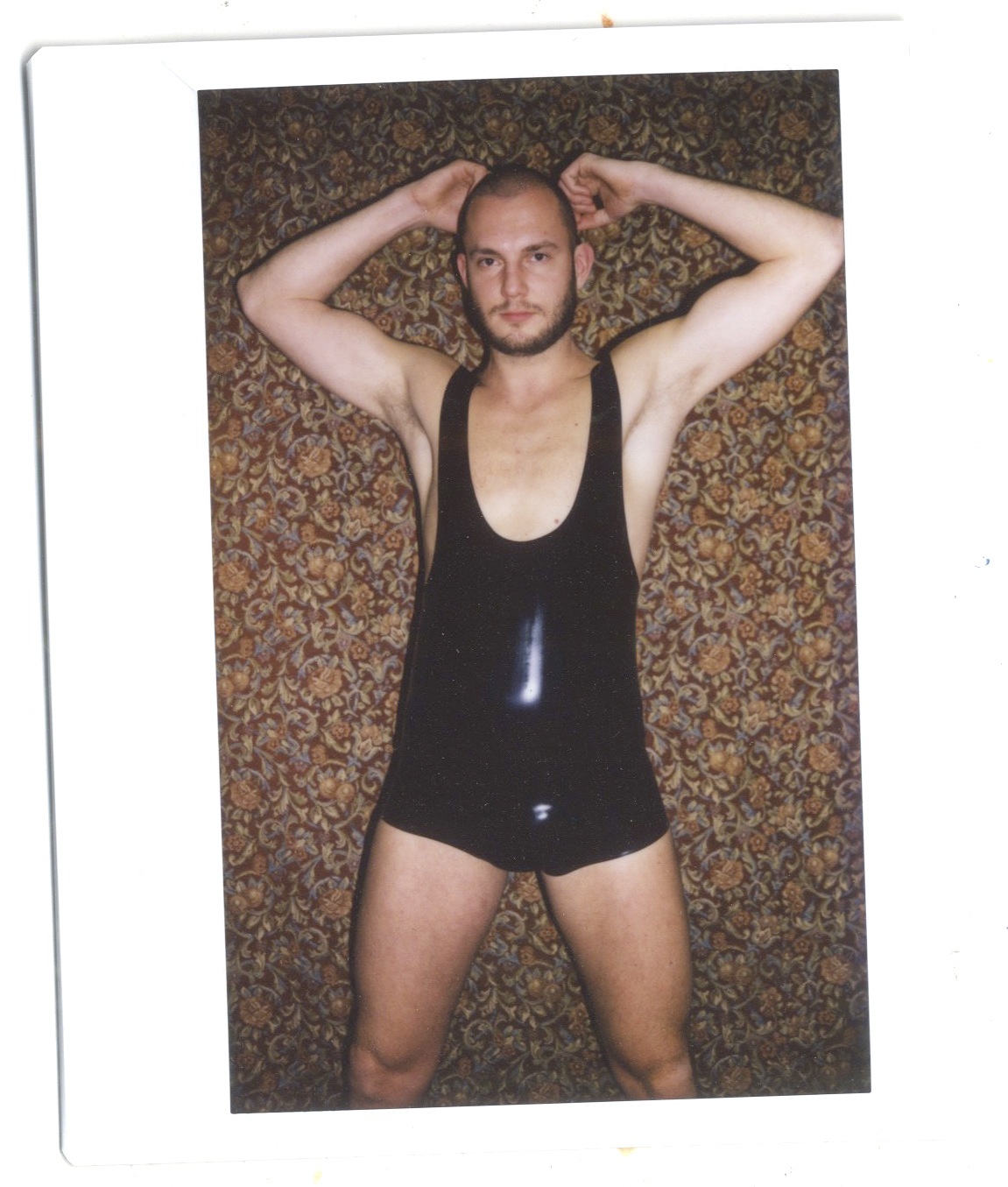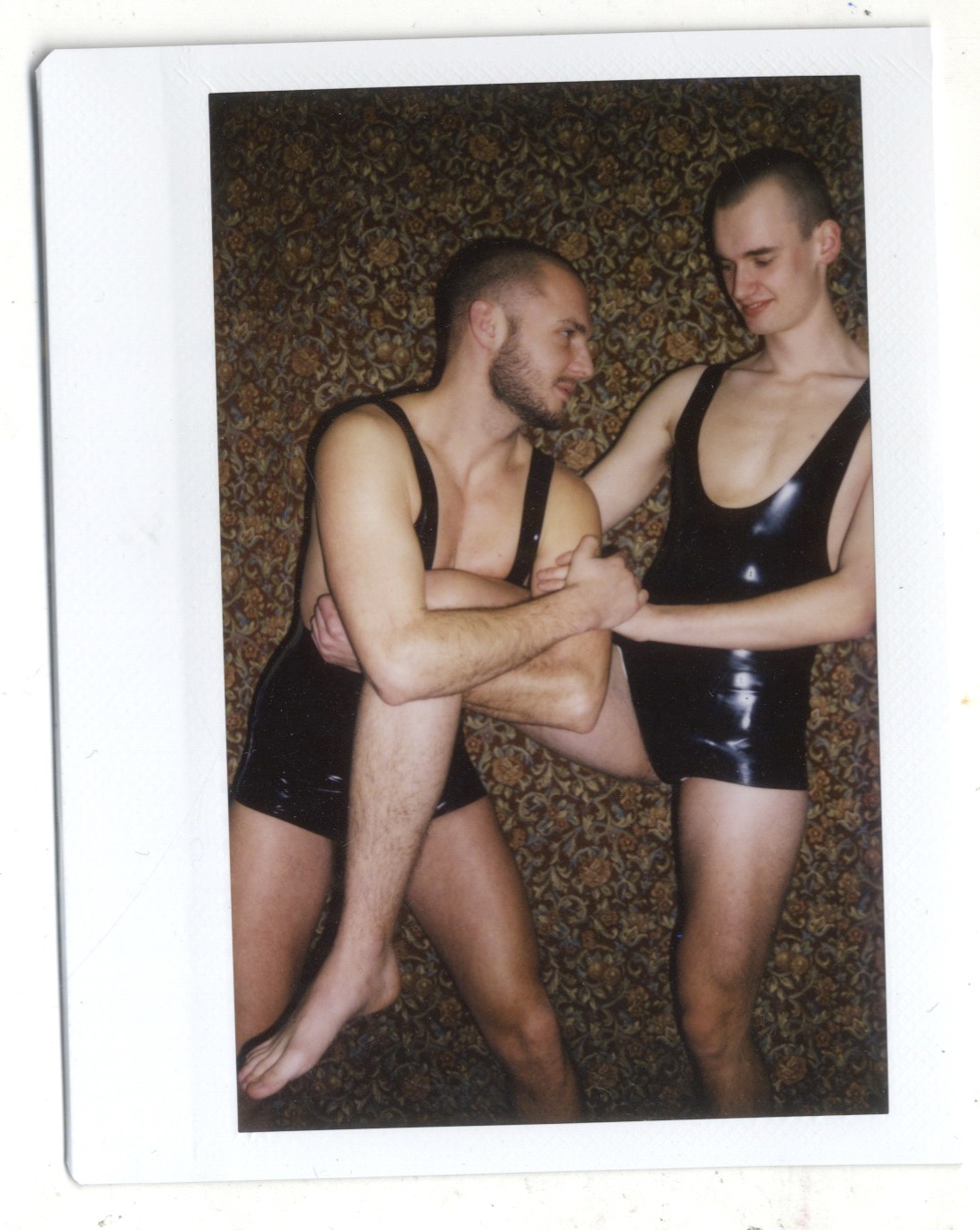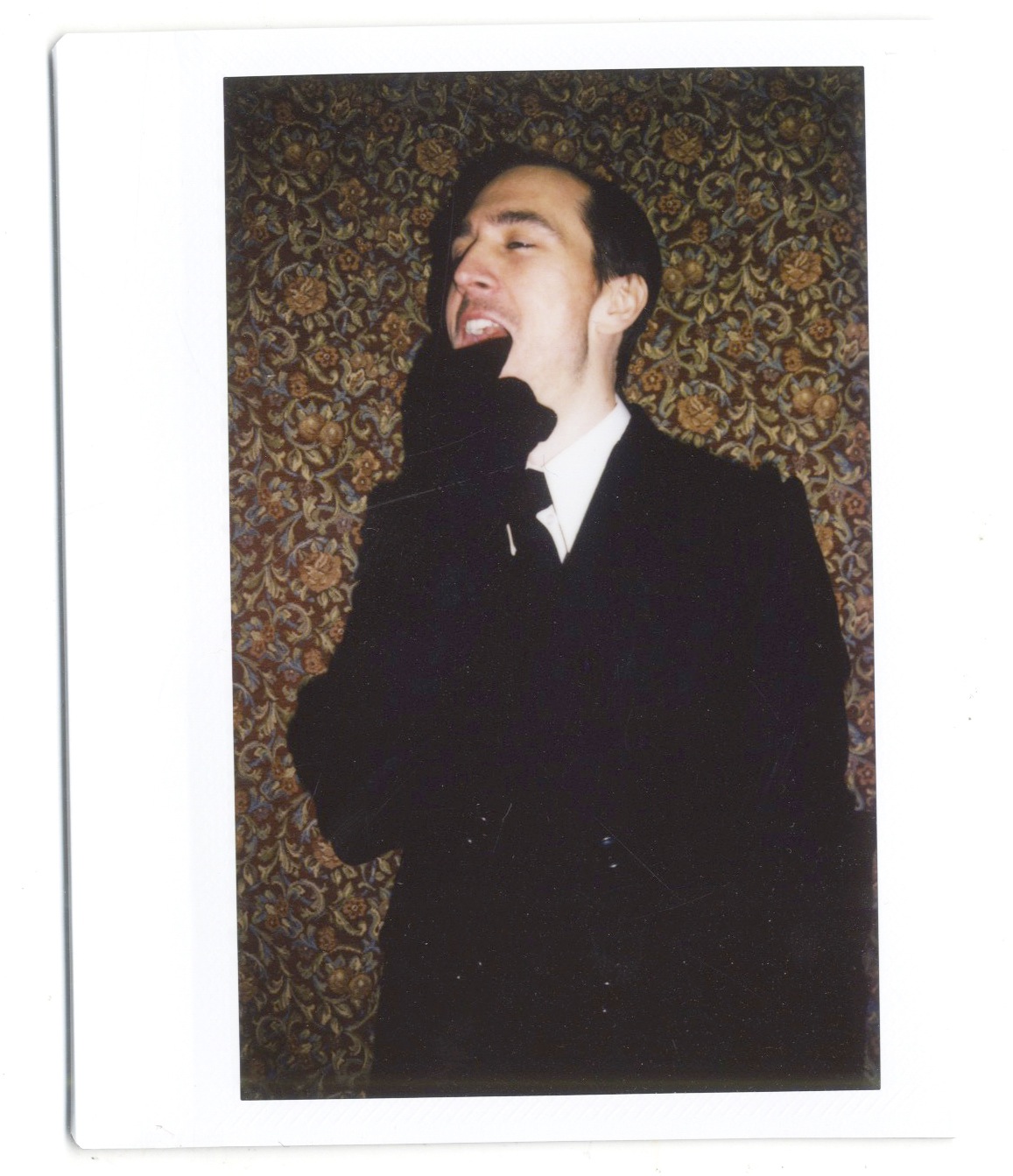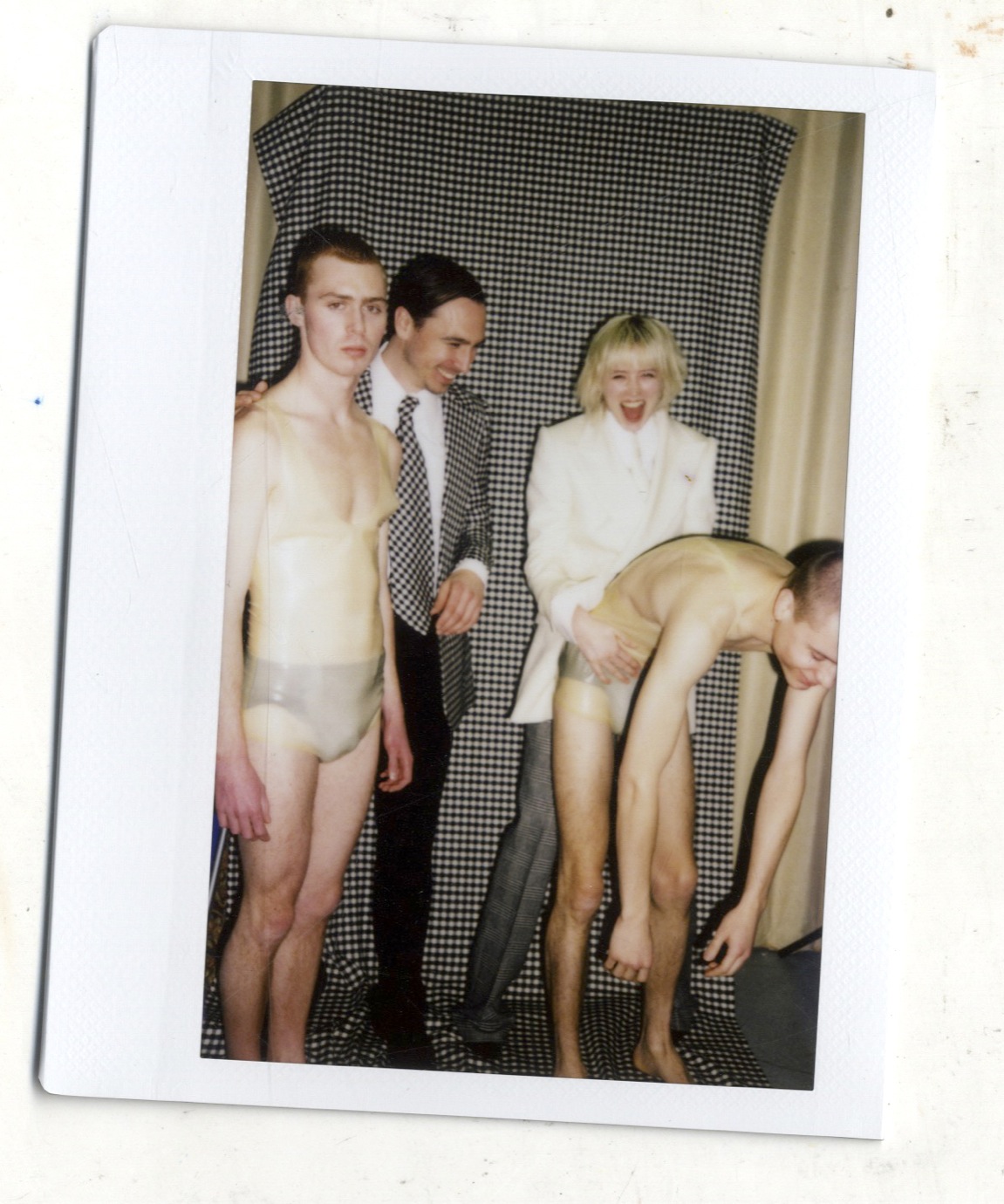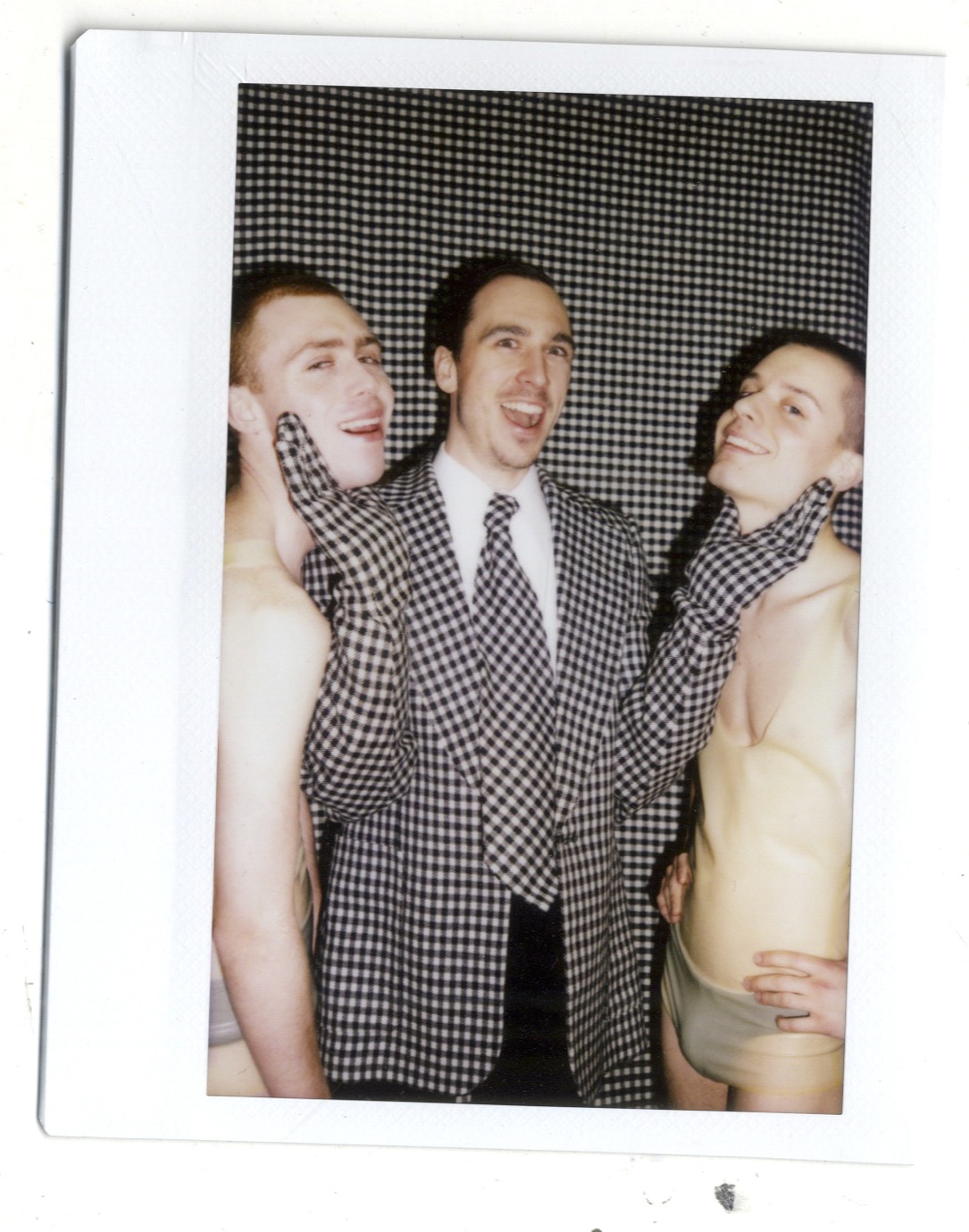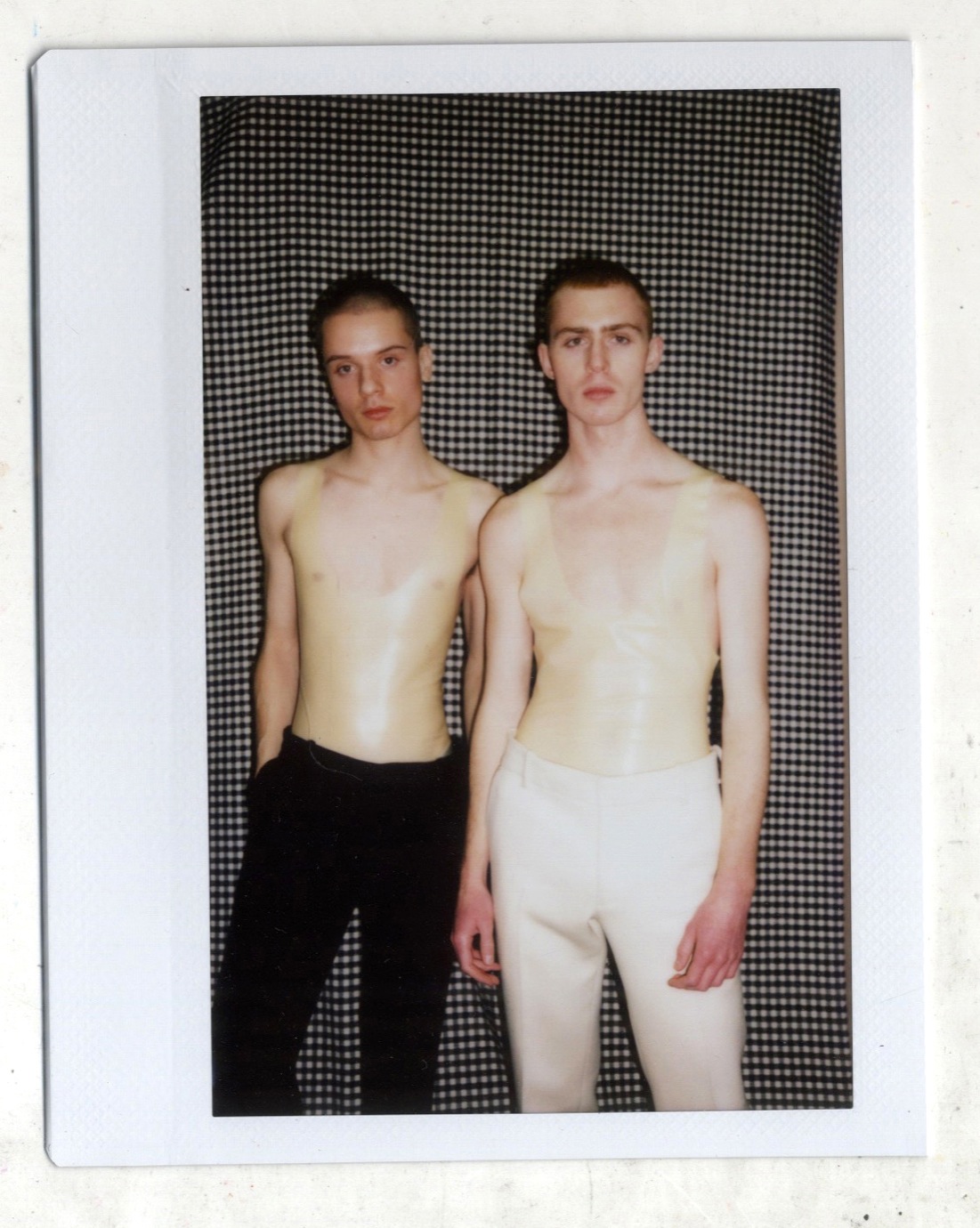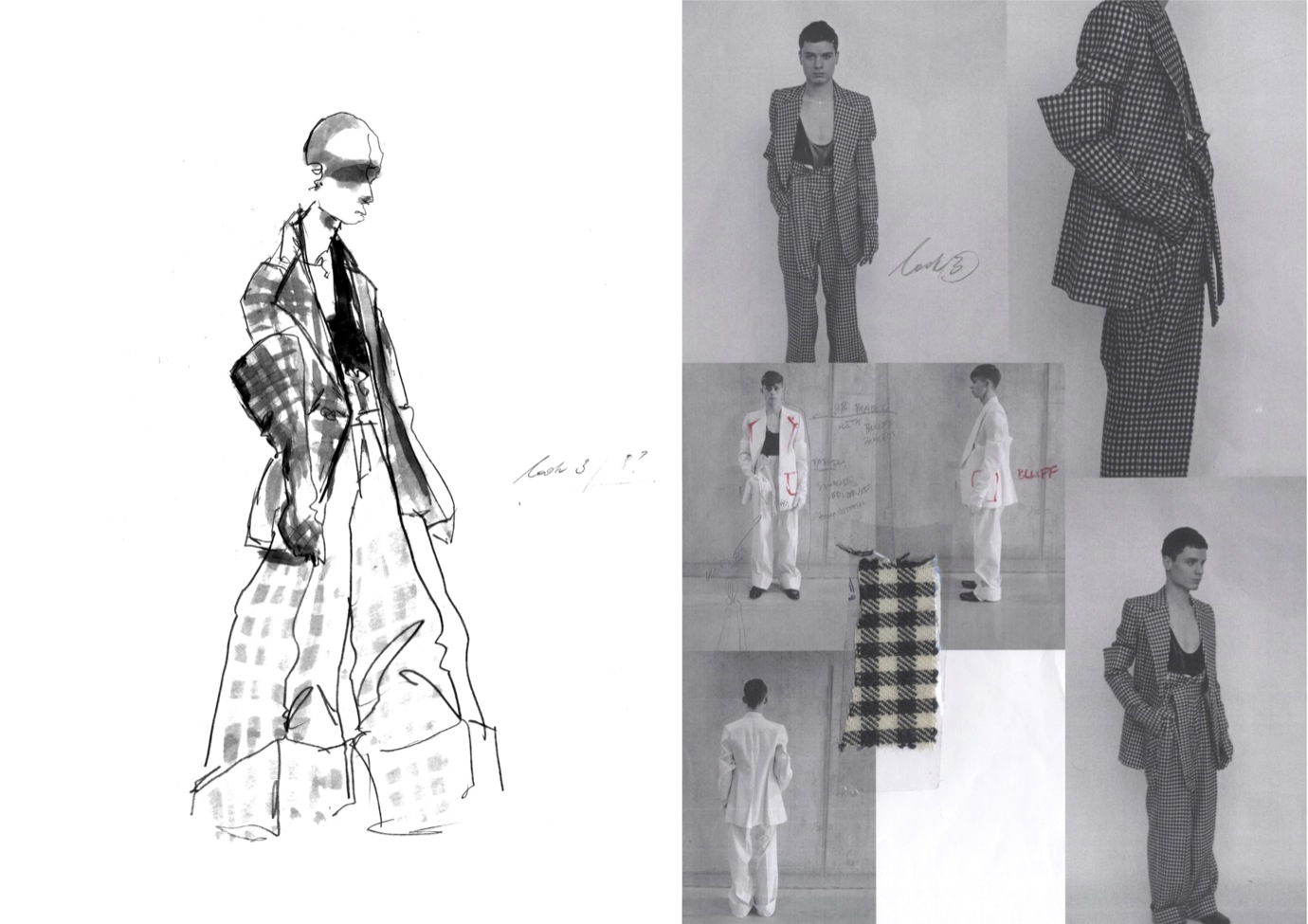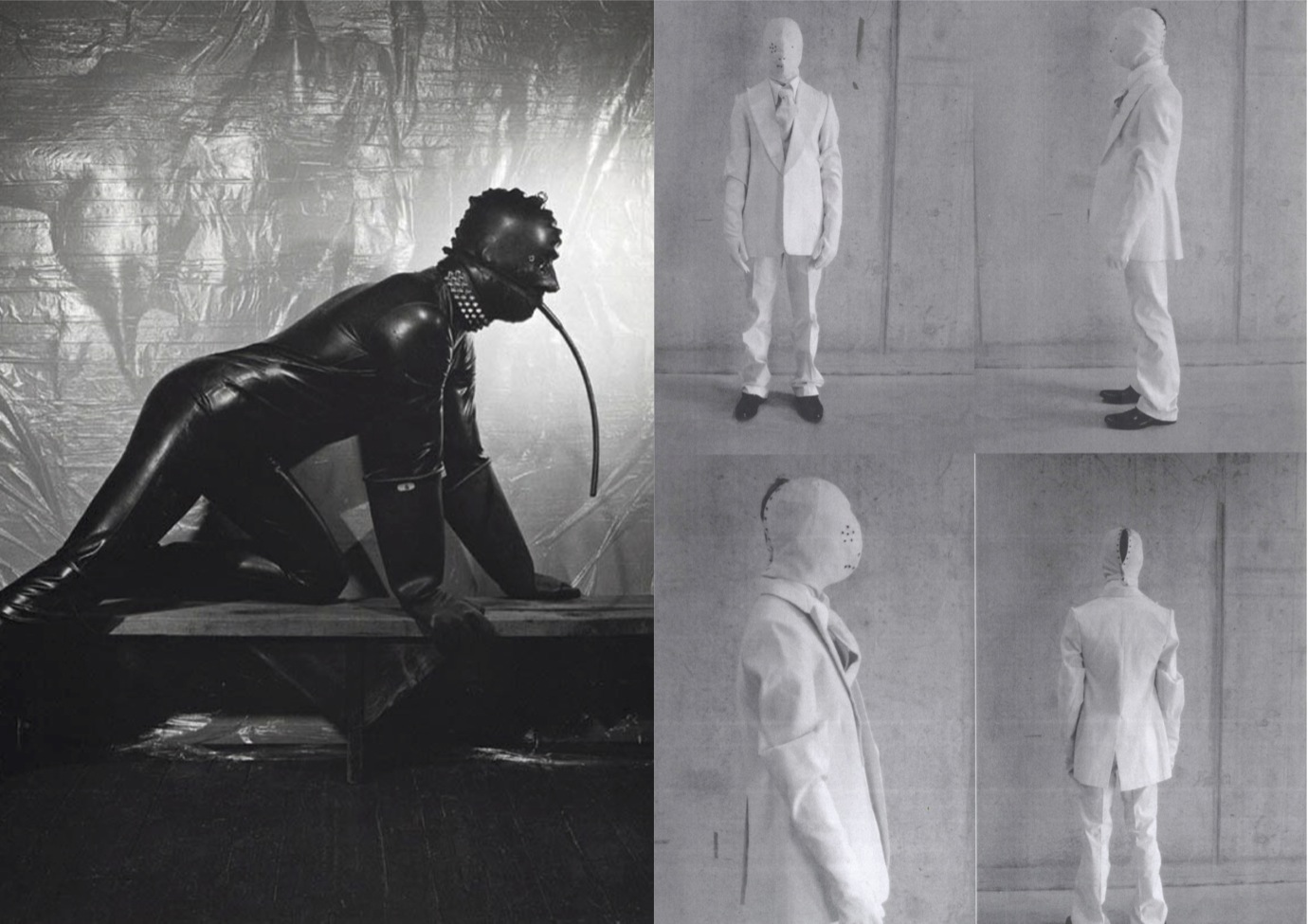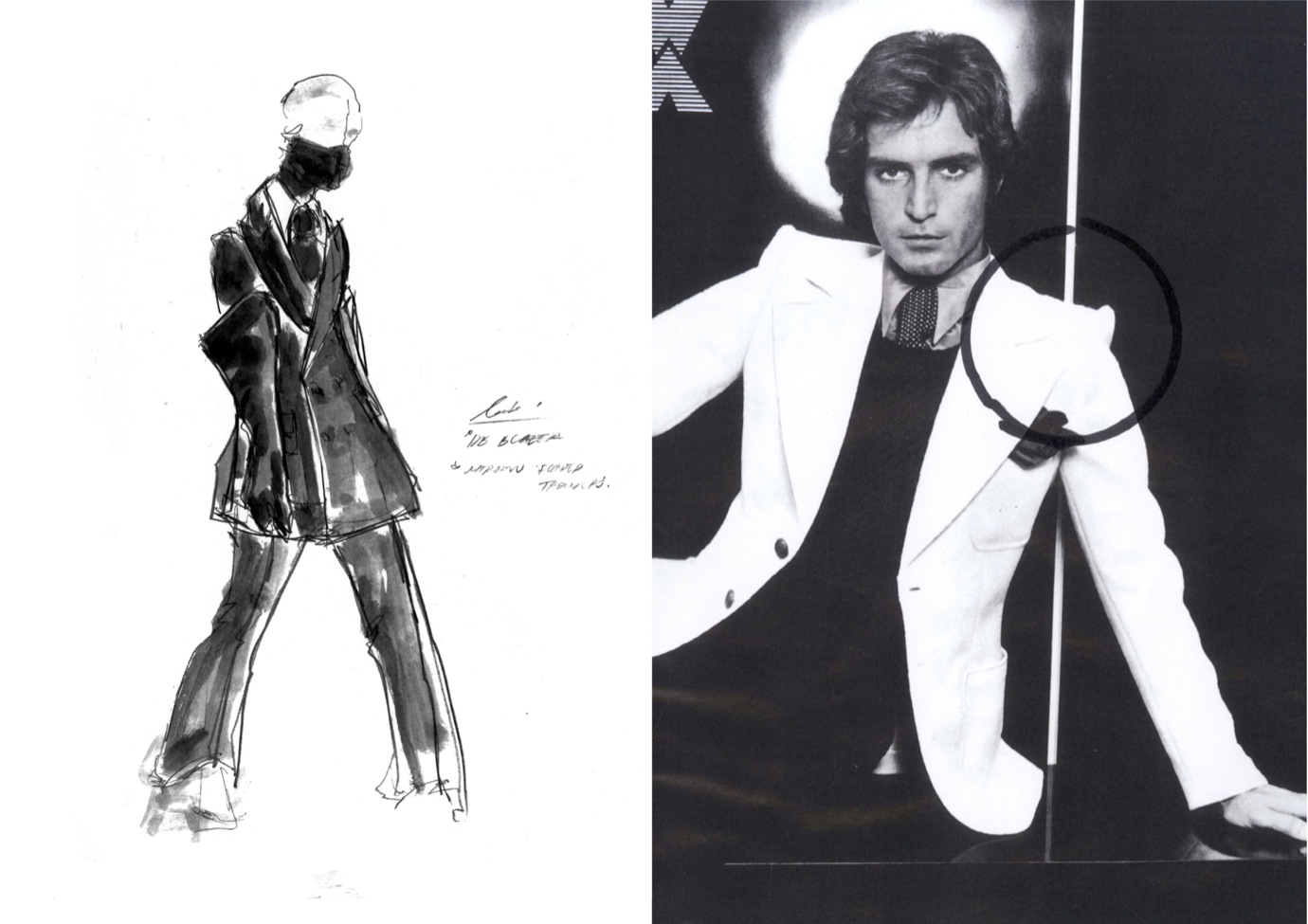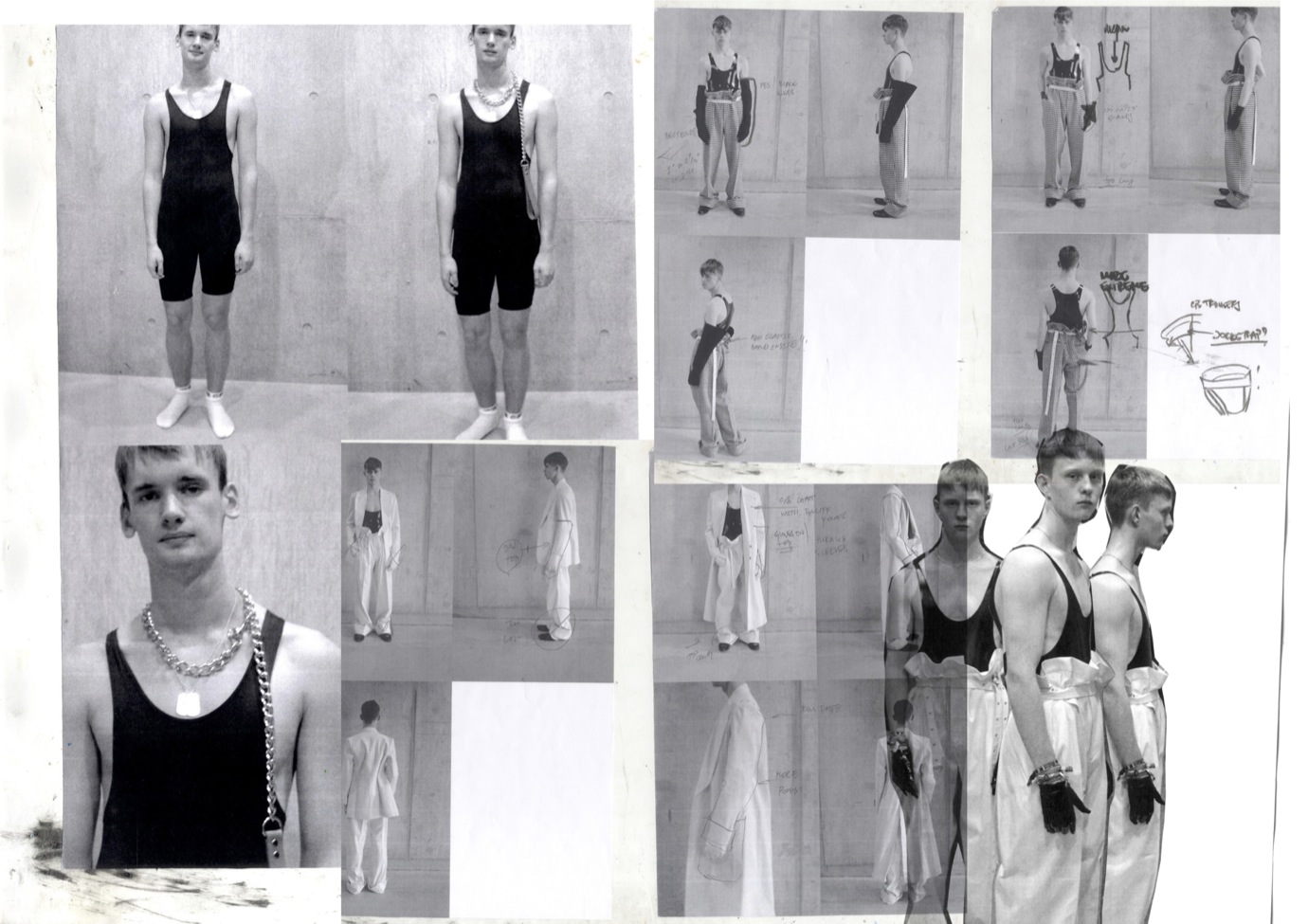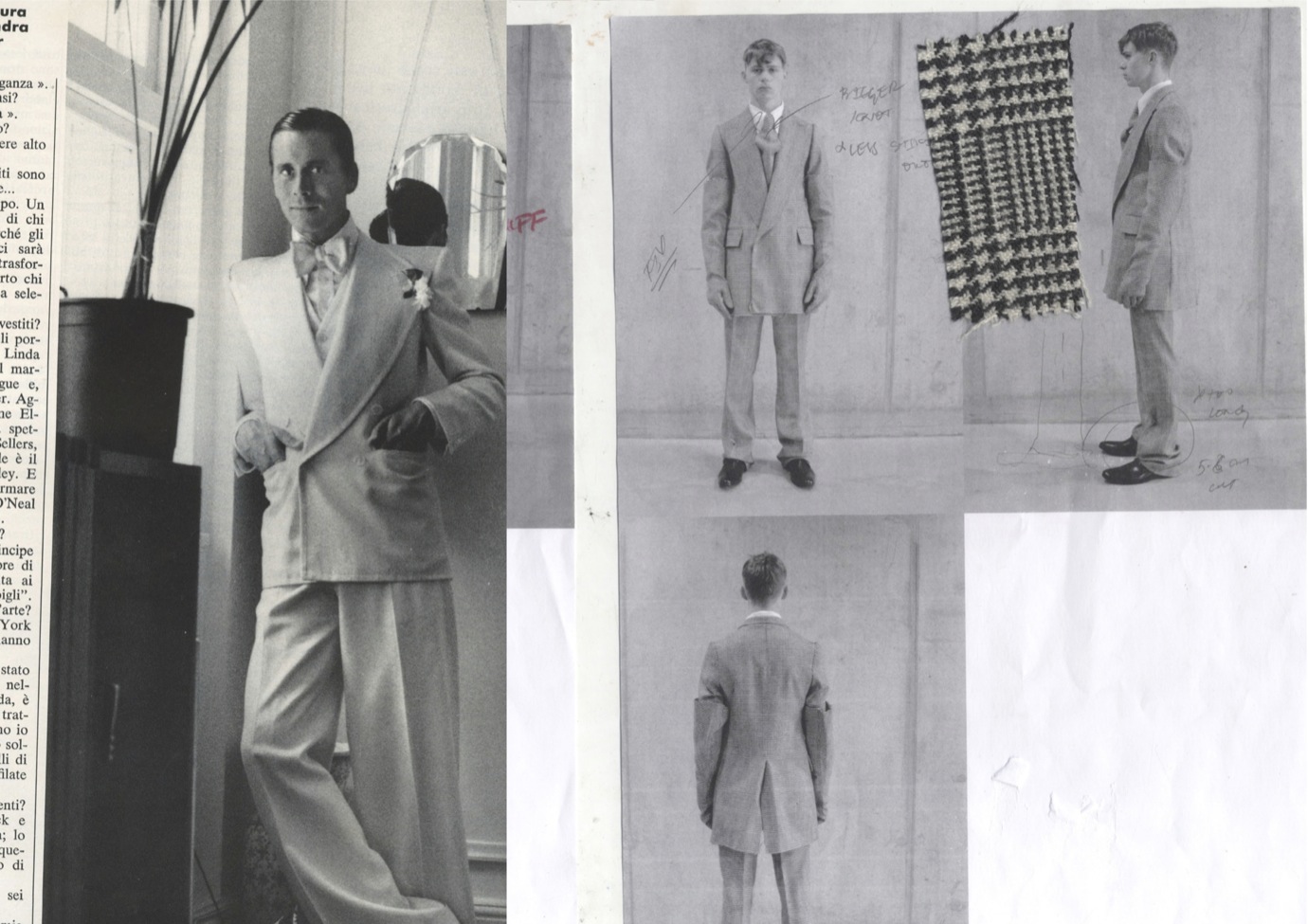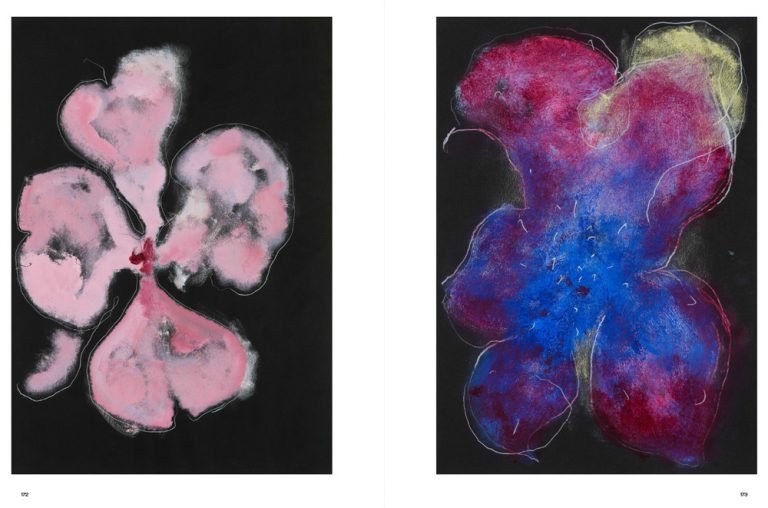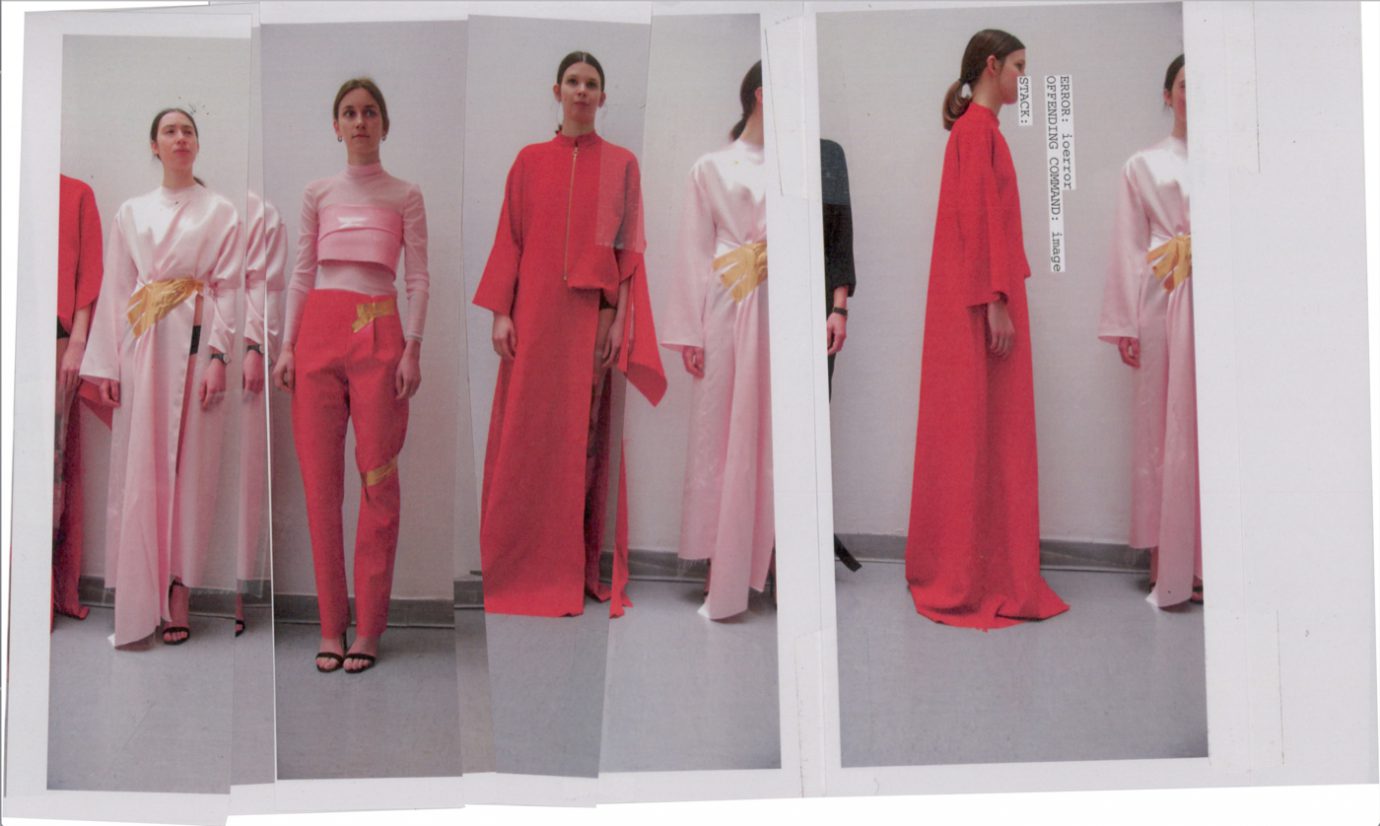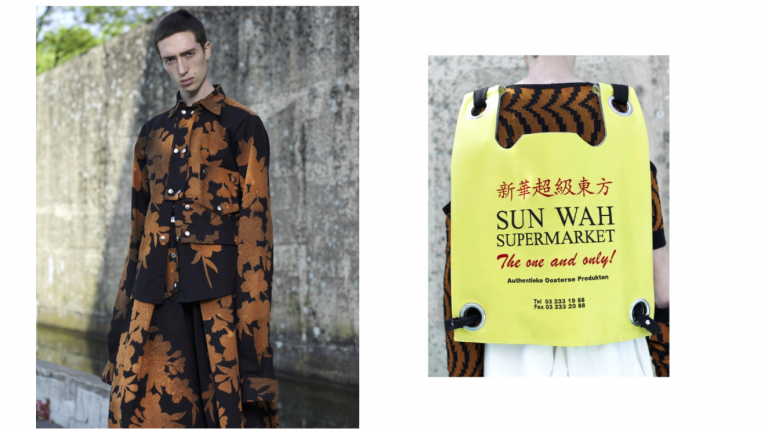Polaroids by Anton Gottlob
“AT THE BACK, IF YOU PUT A BIT MORE TENSION TO ONE SIDE, YOU CANNOT BEND. YOU HAVE TO HAVE THIS POSTURE. IT FORCES THE BEAUTY OF OLD ELEGANCE.”
Fabio’s guidance has been crucial in his growth. “I became who I am as a designer because of Fabio. I know now, you just have to make something personal. My design has to be about myself and what I do, it is not about grades here.”
“So it really started like this: I like to go to techno clubs. I met designers there that are so sharp, and beautifully elegant, and dandy. At night they enter the Berghain [a nightclub in Berlin], then they change from these suits into latex fetish pieces. My first look, the black look, says, ‘I am the master, I’m elegant, I’m powerful, I’m chic.’ Maybe he [his muse] doesn’t have money.” He pauses, rethinks, and laughs, “But for this kind of suit – he has money!”
The fetish reference is not skin deep, it is in the DNA of the collection. The black suit, “is all about restraint too, making parallels with the fetish world. The collar is so stiff it really restrains your neck. All the models were like, ‘Oh My God you have to hold your neck so straight.’” Bekov traces the silhouettes, spinning the jacket around on the mannequin to demonstrate “At the back, if you put a bit more tension to one side, you cannot bend. You have to have this posture. It forces the beauty of old elegance.” The concept carries through to every detail, of every piece. “Not many people realised that, obviously, they just think, ‘oh it’s like a classic menswear jacket.’”
The AW16 line is impeccably made. It is even better in person than on the runway. All suit jackets are beautifully lined, complete with the four traditional inside pockets. The trousers – wide leg, paper-bag waist, or severely pressed, slimmer, classic styles – have internal jockstrap elastic detailing reminiscent of Helmut Lang’s signature strapping (Bekov also interned there). “I wanted to bring a bit of kink into it. Nobody notices obviously, nobody sees that.” All these little details show his dedication to the clothes.
A wrap coat, belted, with oversized lapels, in a monochrome gingham wool, is a stand-out piece. Bekov tries it on with no prompting, and catwalks through the studio, humming his own cabaret song, “It is insane, I love it, obsessed! It makes you so loungy chic. I am like that playboy guy…Hugh Hefner”. He throws his head back, emitting that infectious laugh of his.
The collection was commended by the press. “The most rewarding thing is that after the show, people said things that I thought I only knew myself. They look at it, and they get it –there weren’t any show notes or anything. I was like ‘wow’, that is so worth it. But he hasn’t let the praise go to his head: “I was so surprised when I read what Dazed said about me! After the show, when the lady at Dazed said she liked my designs, I was hugging her, saying, ‘Thank you so much!’”

